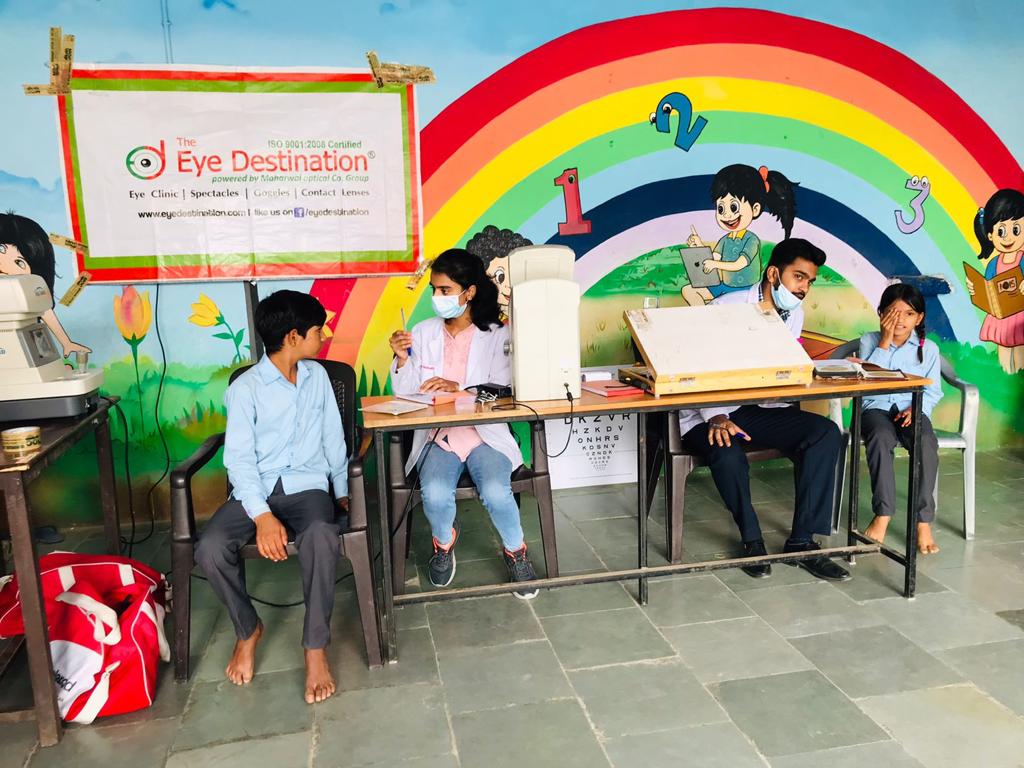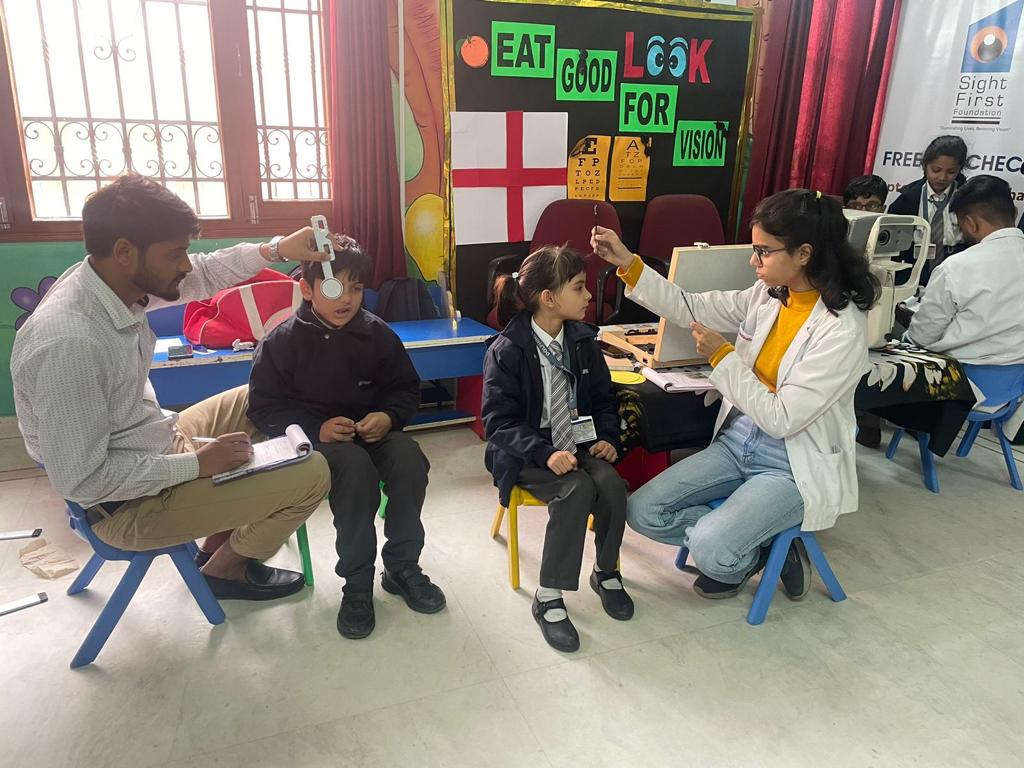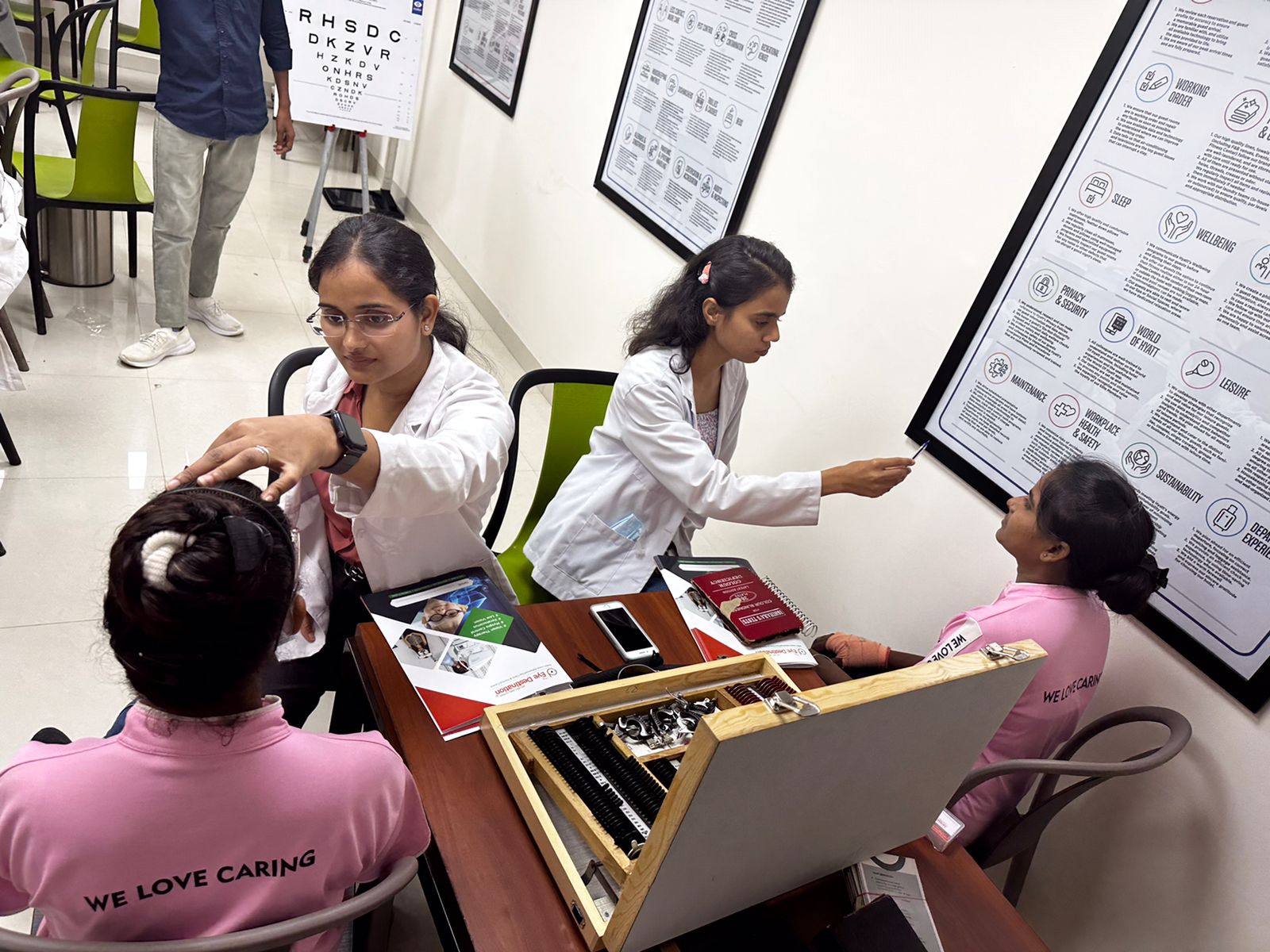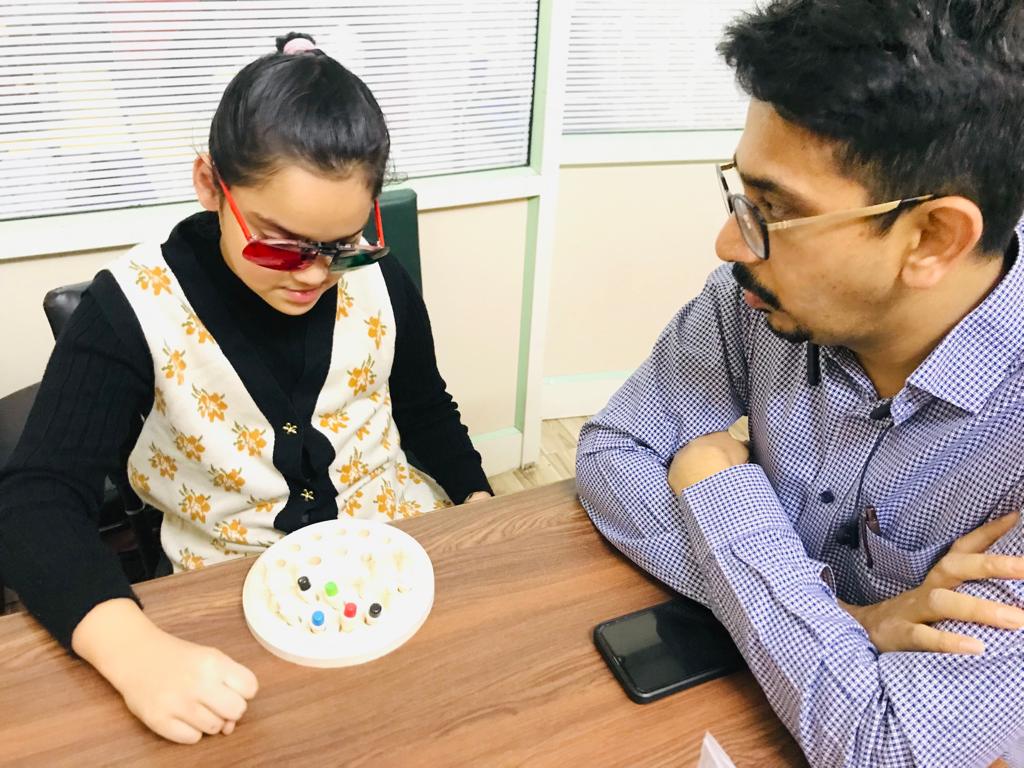Squint Treatment
Squint
What is Squint?
Squint, also known as strabismus, is a visual condition characterized by the misalignment of the eyes, where they point in different directions. This misalignment can lead to various visual and functional challenges, affecting depth perception and overall visual comfort. While conventional treatments like surgery and corrective lenses exist, an emerging and promising approach is vision therapy.
Squint occurs when the muscles controlling eye movement are not properly coordinated. This misalignment can be constant or intermittent, and it may affect one or both eyes. The Major cause for squint is the inability of our brain to fuse or make single 3D image out of two images received from two eyes, hence to avoid double vision or diplopia brain purposefully deviates one eye away from point of fixation. Major reasons for squint include:
- Amblyopia
- Inability of Fusion
- Binocular Vision Imbalance
- Developmental Delay & CVI
- Paralysis or stroke
- Injuries or tumours
- Genetics
Thanks to Neuroplasticity Squint can be corrected at any age with proper Vision Therapy program.
Vision therapy is recommended by most of the squint surgeons internationally to restore the Binocular vision in patient improving the overall success rate of the surgery itself.
Checkout this video of famous scientist Dr Susan Barry in which she shares her life story and tells us how in spite of 3 failed squint surgeries she was ultimately cured with Vision Therapy: https://www.youtube.com/watch?v=XCCtphdXhq8&t=152s
- Surgery: Historically, surgical intervention has been a common approach to correct squint. Surgeons may adjust the eye muscles to realign the eyes but it normally fails to restore binocular vision, which results in failure of the squint surgery in majority of the cases. We can simply say surgery is a shock therapy where eye muscles are cut when the real problem lies in brain.
- Corrective Lenses: Glasses with special lenses can sometimes help manage squint, especially if the misalignment is due to a refractive error. While glasses can be effective in some cases, they may not fully address the muscle coordination aspect of squint.
Vision Therapy: A Comprehensive Approach:
Vision therapy is a non-invasive and holistic approach to treating squint. It involves a series of eye exercises and activities designed to improve eye coordination, restoring binocular vision, focusing abilities, and depth perception (3D Vision). We at Team Optom Abhinav Maharwal are delivering Vision Therapy services for squint management at our clinics and through online service as well. Till now our team has successfully treated more than 150 patients with various types of squint.
Checkout our video on All About Squint on Youtube: https://www.youtube.com/watch?v=D7Y69se0a1g
Key Components of Vision Therapy for Squint:
- Eye Exercises: Vision therapists prescribe exercises to strengthen eye muscles and improve their coordination. These exercises may involve tracking moving objects, focusing on near and far distances, and practicing eye movements.
- Computer-Based Programs: With advancements in technology, vision therapy often incorporates computer-based programs and games. These programs can be engaging for patients, making the therapy process more enjoyable, especially for children.
- Prism Therapy: Prism lenses can be used as part of vision therapy to help correct the alignment of the eyes. These lenses alter the way light enters the eyes, encouraging the eyes to work together.
Home-based Activities: Patients are often assigned activities to practice at home, reinforcing the progress made during in-office therapy sessions. Consistency in performing these activities is crucial for the success of vision therapy.
- Improved Eye Coordination: Vision therapy targets the root cause of squint by enhancing the coordination of eye muscles. This can lead to improved alignment and the development of binocular vision.
- Enhanced Depth Perception (3D Vision): By addressing issues with focusing and eye teaming, vision therapy can enhance depth perception, allowing individuals to perceive the world in three dimensions more accurately.
- Non-Invasive and Personalized: Vision therapy is a non-surgical and personalized approach to treating squint. It considers the unique needs of each patient, making it a flexible and effective option.
Hear From The Expert
Conclusion:
While traditional treatments like surgery and corrective lenses remain viable options for squint, vision therapy offers a comprehensive and non-invasive alternative. By targeting the underlying issues of poor eye muscle coordination, vision therapy has the potential to not only correct misalignment but also improve overall visual function. As with any medical treatment, it’s essential for individuals with squint to consult with eye care professionals to determine the most suitable approach for their specific condition.
Book a Free Consultation
Fill the form below, our team will get in touch with you with in 48 hours.
Hear From Our Clients
Playlist
Get one step closer to a better vision
Click the link below to schedule an appointment and experience our exceptional service firsthand. We look forward to providing you with personalized care and addressing all your vision-related concerns.
Join Our Newsletter
Stay in touch with us to get latest news and special offers.
Address
A-9, 10, University Marg, Bapu Nagar, Jaipur, Rajasthan 302015
Call Us
+91 80058 51260






